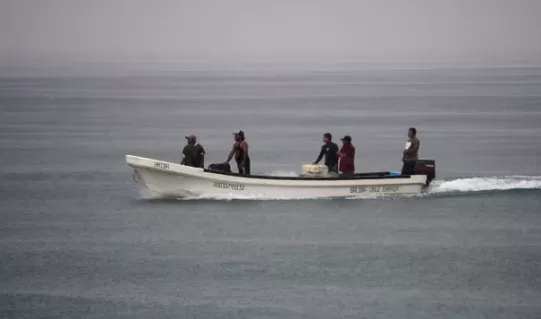Hurricane John made landfall on Mexico’s southern Pacific coast late Monday, bringing with it devastating winds and heavy rainfall. The storm, which intensified to a Category 3 hurricane with maximum sustained winds of 120 mph (190 km/h), has resulted in at least two fatalities due to a mudslide that struck a home in the remote mountain community of Tlacoachistlahuaca.
As the storm made its approach near Punta Maldonado, it rapidly weakened to a tropical storm by Tuesday morning, with wind speeds dropping to 50 mph (85 km/h). However, officials remain cautious, warning that the slow-moving storm could still lead to severe flash flooding and additional mudslides across several states.
Evelyn Salgado, governor of Guerrero, confirmed the fatalities and emphasized the potential for further danger, urging residents to prioritize safety. “Seek higher ground, protect yourselves, and remember that life is the most important thing,” President Andrés Manuel López Obrador reiterated on social media.
The National Hurricane Center highlighted the risk of catastrophic flash flooding and mudslides in Guerrero, Oaxaca, and Chiapas as the storm continued its northwest path at 8 mph (13 km/h). Forecasts predict heavy rainfall could persist throughout the week, particularly in coastal areas.
Experts were taken by surprise by the storm’s rapid intensification, which meteorologist Matt Benz attributed to warmer ocean temperatures that fuel hurricanes. “Rapid intensification has become increasingly common in recent years,” he noted, pointing to changing climate conditions.
In anticipation of the storm’s impact, authorities in Oaxaca ordered evacuations and established shelters for residents. Laura Velázquez, federal coordinator of civil protection, urged those in coastal areas to take precautionary measures to ensure their safety.
The state government reported the evacuation of 3,000 individuals and the activation of 80 shelters, supported by 1,000 military and state personnel deployed for emergency assistance. Meanwhile, residents in tourist destinations like Puerto Escondido prepared for the storm’s arrival, with many fishermen pulling boats from the water as heavy rains exacerbated already precarious road conditions.
This storm follows last year’s Hurricane Otis, which devastated Acapulco, leaving a legacy of destruction and criticism for the slow governmental response. López Obrador’s administration has committed to improving disaster preparedness, including enhancing early warning systems akin to those used for earthquakes.
As the region braces for potential impacts, the lessons from Otis remain fresh in the minds of both residents and officials, highlighting the urgent need for effective emergency response strategies in the face of increasingly unpredictable weather patterns.
Related topics:
- Rock Climber Falls to Death at Devils Tower, Partner Rescued
- Eau Claire Residents Weigh In on Bird E-Scooter Launch
- No Injuries Reported After Chippewa Falls Boys Soccer Team Bus Crash

